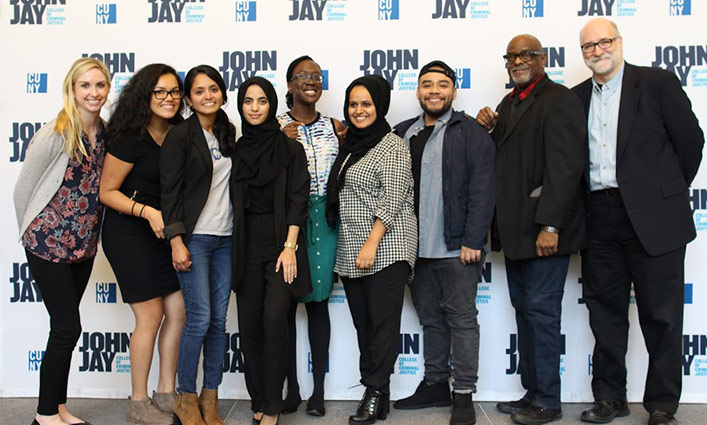
On October 26, the John Jay Research & Evaluation Center (JohnJayREC) hosted the Denormalizing Violence Conference, where they presented results from a study that evaluated the ground-breaking CURE Violence program. CURE Violence reduces violence by understanding and treating it as a public health issue, and for four years, JohnJayREC has received funds from the Robert Wood Johnson Foundation (RWJF) of Princeton, New Jersey, the New York City Council, and the New York City Mayor’s Office of Criminal Justice to conduct evaluation of the program.
Jeffrey Butts, Director of JohnJayREC, opened the conference by pointing out favorable findings that show that CURE Violence has contributed to reducing violence, increasing the adoption of non-violent norms in place of violent ones, and fostering community trust and cooperation with law enforcement.
Additionally, CURE Violence staff who are trained to anticipate and deter violent conflicts as well as provide counseling, spoke at length about the experience of implementing the CURE Violence model. One of the primary reasons they say its works is because the model is community-centered and is facilitated by trusted community members.
“The program works because it’s an inside job,” said David Caba, Program Director with Bronx Rises Against Gun Violence, a CURE Violence site. “The Violence Interrupter needs to live in the catchment where they work. You can’t bring someone from the suburbs to the South Bronx to do this work.”
Shanduke McPhatter, Executive Director of Gangstas Makin' Astronomical Community Changes, which uses the CURE Violence model in Brooklyn, said that as someone who was formerly incarcerated and affiliated with a gang, he’s uniquely positioned as a credible messenger to change the way individuals think about violence. “Instead of telling somebody what to do, I show them what to do,” he said.
The benefits tend to be beneficial for everyone involved. “Once you start changing other people’s lives, you have the shot to change your own life,” said Marcus McAllister, from the National CURE Violence team. “This work transforms the workers.”
But while the evidence is strong that CURE Violence is effective, the research did not always fully convey the transformative impact that the program had on the lives of participant and staff members.
“We went out and surveyed over 5,000 young men in New York City, but you couldn’t necessarily measure everything,” said Sheyla Delgado, JohnJayREC Deputy Director for Analytics. “We can become more creative about how we measure these things,” she added, mentioning that program recognition may be another effective way to measure CURE Violence’s impact.
Charlie Ransford, Director of Science and Policy at CURE Violence, says that despite these challenges, the research that JohnJayREC has done is invaluable to making sure that the program continues to improve. “Our approach is within the community and to get rid of violence, 100 percent,” he said. “Research helps us figure out if we have the right perspective and ask how can we make the model better? How can we make it work to the 100 percent level?”
New York City Council Member Jumaane Williams echoed that CURE Violence’s community-centered approach is exactly what’s needed to counter mass incarceration, which has been discredited as ineffective in reducing both violence and crime. “Crime prevention right now is to lock up as many black and brown people as possible, but we know that doesn't work,” he said. “We’re using an acute solution for a chronic problem.”
As “a chronic problem” that has the potential to be stopped by looking at long-term policy solutions is exactly how Robin L. Holmes Myers, Operations Director of CURE Violence at the NYC Department of Health and Mental Hygiene (DOHMH), thinks violence should be approached. “There is structural violence happening in these neighborhoods,” she said. “How do we change policies that are causing this violence? How do people receive services that are needed like housing or mental health services?”
Aletha Maybank, Deputy Commissioner of DOHMH, said that framing violence as a public health issue will help us see the real cost violence has on our communities.
“The larger goal is not just to stop violence," she said. “It’s about stopping premature death.”



